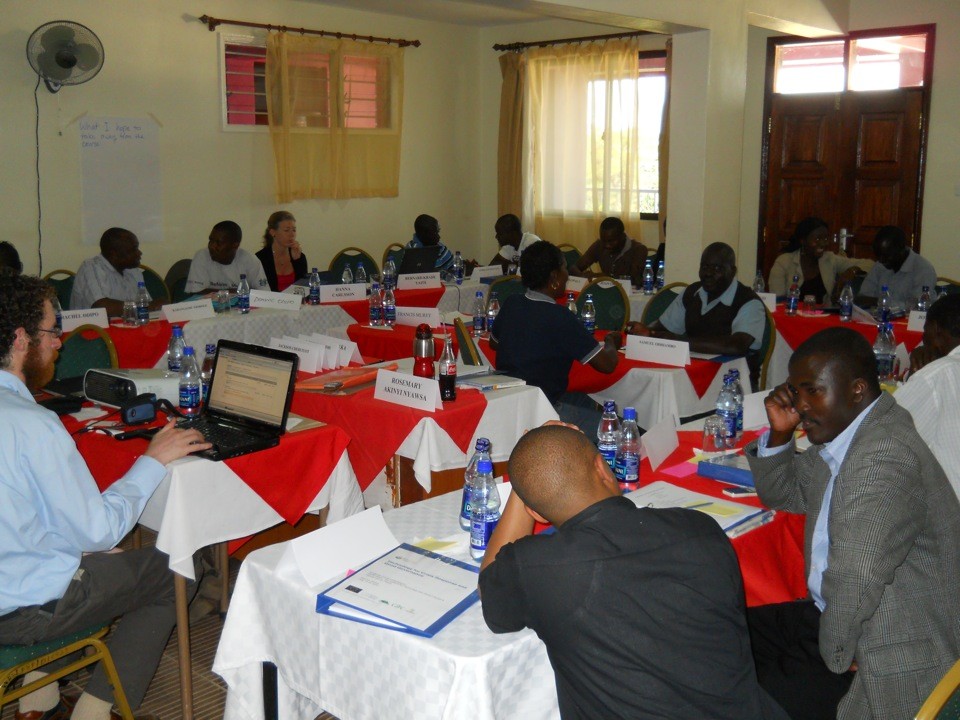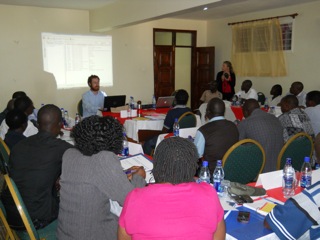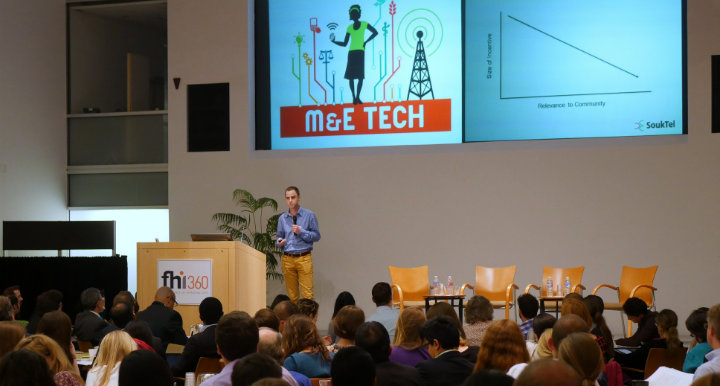 TechChange was recently brought to Kenya by the Partnership for Peace , a program run by the Konrad Adenauer Foundation, to train local leaders from Kenya’s Nyanza, Rift Valley, and Western provinces in the use of FrontlineSMS and Ushahidi software. These leaders were drawn from Community Service Organizations (CSOs), which are responsible for supporting everything from local agriculture, public health, election monitoring and conflict resolution efforts.
TechChange was recently brought to Kenya by the Partnership for Peace , a program run by the Konrad Adenauer Foundation, to train local leaders from Kenya’s Nyanza, Rift Valley, and Western provinces in the use of FrontlineSMS and Ushahidi software. These leaders were drawn from Community Service Organizations (CSOs), which are responsible for supporting everything from local agriculture, public health, election monitoring and conflict resolution efforts.
Our training program focused on the use of FrontlineSMS and Ushahidi as tools for monitoring elections, since the CSOs will play an important role in supporting the next round of national elections in 2012. Our three-day program started out with some basic discussions of technology, governance, and the role of information communication systems in Kenya. We also introduced the FrontlineSMS software the first day so that participants could see it in action and use it before the simulation on the second day of the course. The simulation, an election monitoring game, allowed participants to go through the entire process of publicizing their data gathering project, collating data sent in by text message, and using the FrontlineSMS and Ushahidi software to disseminate data to “voters” who would use the information to make decisions about where to vote.
The fact that the participants were able to quickly become acquainted with how to use FrontlineSMS and Ushahidi and move into the much more important aspects of program design was in large part due to the social and hands-on method of training the TechChange team used. As Hanna Carlsson, the project lead for the Konrad Adenauer Stiftung wrote, “The kind of approach used, hardly any theory but a lot of practice, was perfect for the group.” By showing the capabilities of the software without predisposing the participants to how it should be used we opened the door for them to bring their own experiences and needs to the training. This was most evident in the final day of the training where participants formed groups with others from their regions to develop project strategies for early warning and communication systems to prevent a repeat of the 2007-8 post-election violence. Since the participants already knew the local organizations and community leaders we were able to step back and provide guidance regarding information security and management while letting them provide the context into which they would be integrating these new tools and communication workflows.
“The kind of approach used, hardly any theory but a lot of practice, was perfect for the group.” By showing the capabilities of the software without predisposing the participants to how it should be used we opened the door for them to bring their own experiences and needs to the training. This was most evident in the final day of the training where participants formed groups with others from their regions to develop project strategies for early warning and communication systems to prevent a repeat of the 2007-8 post-election violence. Since the participants already knew the local organizations and community leaders we were able to step back and provide guidance regarding information security and management while letting them provide the context into which they would be integrating these new tools and communication workflows.
The free-form nature of SMS communications was also seized upon by the participants as enabling a whole suite of opportunities outside the scope of the election monitoring and early warning system that we were discussing. As Karangathi Njoroge a representative from Rift Valley noted, the tools “can be used to set up not only for tracking conflict situation but also for dialogues, surveys, project follow-up and extension services, market information systems and monitoring human rights abuse.” One advantage that was widely recognized was the fact that organizations could remind members of meetings without having to call everyone individually. In areas without internet and email, being able to maintain contact groups through the mobile phone system will undoubtedly save a tremendous amount of time.
 The plans were so impressive that, Peter Mwamachi, a representative from the National Steering Committee on Peace Building and Conflict Management, is looking into reproducing the training with peace monitors from the rest of Kenya’s regions. Mr, Mwamachi is involved with the Amani 108 project based out of the office of the president which has established a short code and interactive map to plot early warning indicators of violence. He sees FrontlineSMS being used as a parallel system to enable local peace monitors and organizations the ability to communicate more easily with their population while at the same time forwarding information to the national 108 code. Local organizations would be empowered to respond within their communities and have the information management capabilities to handle community outreach and mobilization while reducing the data processing demands at the national level.
The plans were so impressive that, Peter Mwamachi, a representative from the National Steering Committee on Peace Building and Conflict Management, is looking into reproducing the training with peace monitors from the rest of Kenya’s regions. Mr, Mwamachi is involved with the Amani 108 project based out of the office of the president which has established a short code and interactive map to plot early warning indicators of violence. He sees FrontlineSMS being used as a parallel system to enable local peace monitors and organizations the ability to communicate more easily with their population while at the same time forwarding information to the national 108 code. Local organizations would be empowered to respond within their communities and have the information management capabilities to handle community outreach and mobilization while reducing the data processing demands at the national level.
The most inspiring part of the training came a few days later when one of that participants Joseph Owuondo let us know that because of his experience he was working with a participant from a neighboring province to schedule a training “to be run by me targeting young people from his organization.” This multiplicative impact of information technology is indisputable with each generation cooperating on new tools and approaches to improve their contexts. It is my deepest hope that in some small way as Njoroge put it “this eye opening training that has opened a new chapter in my life” will aid the Kenyans working to peacefully write this next chapter of their nation.
If you or your organization in having a similar training please contact us at info@techchange.org. For a list of all our training topics please visit our Professional Training page.


